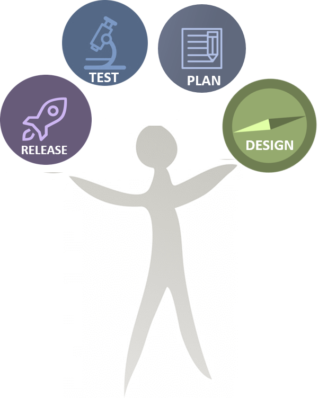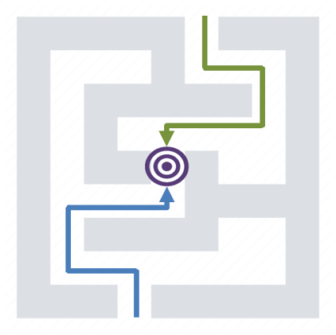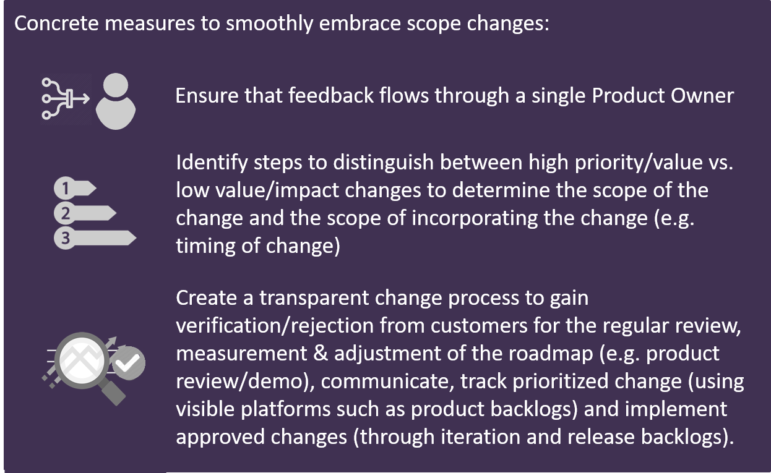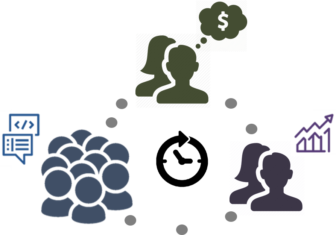When applied effectively, product delivery and process management frameworks can present great rewards in the way we work. However, they may also result in drawbacks that fail to fulfill our needs. In the previous “Agile” vs. “Waterfall” blog series, It’s Not a Competition and What is the ‘Right’ Approach?”, we discussed how both Agile and traditional project management approaches share similar goals of efficiency and value delivery, and also examined tools to help determine the best approach for a given project delivery. In this final segment, we explore the value and limitations of both approaches against key project challenges and suggest proven methods that can be leveraged to help organizations maximize the benefits of these approaches, especially during a process transition.
Agile transition requires a supportive environment that spans beyond process checklists and takes into account the value and limitations of these approaches and leverage compromising points to reach a realistic approach that is tailored to the organization. So, how can organizations steer the overall transition in a desired manner?
Planning: Recognizing Traditional Limitations and Reaping Early Benefits of Agile
Traditionally, planning has been a one-time phase and a thorough activity that happens upfront to establish project / product requirements early. Agile, in contrast, has demonstrated better project success by embedding the planning step as a recurring event throughout the project lifecycle. This difference represents one of the challenges organizations encounter during a transformation, particularly when dealing with  requirements.
requirements.
We have found that upfront planning structure is effective when employed to define milestones and can continue to be leveraged to establish the product vision and develop high-level roadmaps that articulate the path to deliver the vision. Additionally, the enterprise can utilize this approach to communicate project objectives, release goals, coordinate resources, identify and mitigate major dependencies. This structure works notably well with projects that are complex, especially when requirements may evolve throughout the project. As the project progresses further, introducing an Agile framework that repeats the planning activities will enable discovery of granular features and design details that can be prioritized throughout phased releases, the regular review, measurement and adjustment of the roadmap and allow for faster and more controlled improvements.
Scope: Embracing Change and Maximizing Its Value
 When it comes to scope, both approaches acknowledge the separation between the Project Scope and the Product Scope by recognizing the fact that the scope of a product will continuously evolve so long as the product is being maintained while the project scope is completed when specific features of a product / service are delivered within a specified timeframe. Yet, the looming differences between these approaches surface when it comes to determining when and how the Project Scope is defined to achieve project objectives, presenting one of the biggest challenges to transitioning organizations.
When it comes to scope, both approaches acknowledge the separation between the Project Scope and the Product Scope by recognizing the fact that the scope of a product will continuously evolve so long as the product is being maintained while the project scope is completed when specific features of a product / service are delivered within a specified timeframe. Yet, the looming differences between these approaches surface when it comes to determining when and how the Project Scope is defined to achieve project objectives, presenting one of the biggest challenges to transitioning organizations.
When transitioning from a traditional to an Agile approach, one compromise to consider is, adopting the fixed scope management approach of “Waterfall” for the identification and delivery of the minimum set of features that deliver customer value (the Minimum Viable Product, MVP). As the development progresses, the organization can employ Agile frameworks to help facilitate a variable scope approach that creates ongoing feedback loops, enables customers to make adjustments and grants project teams an opportunity to respond through short delivery cycles.

Stakeholders: Welcoming Ongoing Engagement
Meeting customer or user requirements remains a shared goal for both traditional and Agile delivery approaches. The main difference, however, lies on the how and the when to get them involved. While the traditional approach provides strong foundations and structure for effectively managing the stakeholder identification, analysis and mapping processes, it continues to struggle in reaching these core groups just-in-time to get their changes without impacting the overall delivery success.
To effectively address some of these gaps, Agile frameworks can be adopted early in the transition process for engaging users and customers throughout the development lifecycle.  Consider swapping the interim “status reporting” requirements while stakeholders wait to review the final the product, with ongoing product demos, screenshot/wireframe reviews, mock web pages, or even an increment of a product/service/feature that is usable. Employing such communication approaches and incremental development processes increases the frequency and quality of feedback and gives the organization flexibility to respond to change and ultimately better focus on redefining and delivering what is valuable for the customer.
Consider swapping the interim “status reporting” requirements while stakeholders wait to review the final the product, with ongoing product demos, screenshot/wireframe reviews, mock web pages, or even an increment of a product/service/feature that is usable. Employing such communication approaches and incremental development processes increases the frequency and quality of feedback and gives the organization flexibility to respond to change and ultimately better focus on redefining and delivering what is valuable for the customer.
Looking Ahead
Whether employing a traditional “Waterfall” or an Agile approach, project / product management is a profession with an ever-increasing emphasis on providing business value as the ultimate goal. Thus, the way we deliver must continually evolve in a way that it improves flexibility and ultimate success to effectively respond to the fast changing needs of our world.
Our experience has proven that hastily integrating new approaches and processes into existing, rooted frameworks often creates conflicting environments that make adoption overwhelming, hence a high chance of abandonment during the adoption process. To this end, when an organization is championing a deliberate shift towards an Agile approach, leveraging existing processes early-on while introducing new frameworks can serve as an effective change agent in the development of a tailored strategy that will better enable the successful delivery of objectives.
Looking to learn more? Access more resources on How Project Managers Can Adopt an Agile Leadership Style or contact us to learn more about how to effectively maximize your investments on continuous process improvements and ultimately, toward your business goals.
